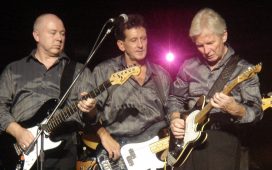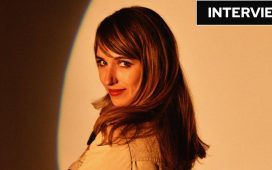If I could pick any superpower, it would be the ability to sleep on demand. I’ve always been a poor sleeper. I have spent whole nights awake, only to drop off as the sun came up, and I’ve resigned myself to all-nighters on 24-hour flights. Having a baby helped; the brutality of sleep deprivation with a newborn could send me into immediate slumber, given the chance. Yet, often I’d wake up exhausted, frustrated that the baby was still asleep but I wasn’t.
I am not alone: 36 per cent of UK adults struggle to fall asleep every week, and it’s partly down to anxiety levels, which are on the rise. Covid-19 sparked a 25 per cent increase of anxiety and depression globally, according to a scientific brief released by the World Health Organisation in March.
More on Sleep
So an invitation for a listening experience of an album designed to reduce anxiety-induced sleep problems was alluring. Held at L-Acoustics London office, it was a chance to delve into Spatial Sleep Music, the newest album from composer Tom Middleton. As a performer, he worked with (Kan)Ye, Lady Gaga and Mark Ronson before suffering burnout and his own insomnia, and since then has been creating science-rooted wellness music to help people sleep.
Middleton retrained in sleep-science coaching before joining the Spatial Sound Institute in Hungary to experiment with the latest technology. Spatialisation in music is similar to scoring a film soundtrack for surround-sound cinemas; the audio can be placed anywhere around the listener for effect. Being surrounded by sound mirrors how we hear in the real world, and creates a sense of presence as we focus our awareness in the way we would during meditation.
“Sleep is a foundational pillar of mental and physical wellbeing,” says Middleton. “Anxiety is a key cause for poor and disrupted sleep and I wanted to investigate the potential for spatial audio to reduce anxiety. The album is designed to slow you down and prime you for better sleep.”
In the listening room, multiple speakers amplified the effect. Lights dimmed, I slipped readily into the album’s immersive sound world. One minute I was listening to the sound of rain, piano and rippling harp, and the next I was asleep. It was truly a miracle, for me at least. Afterwards, I experienced the effect of a sleeping pill: relaxed, and barely able to keep my eyes open. We moved on to the 4D experience, which involved listening and placing a pebble-shaped gadget – called the Sensate – on my chest. It’s supposed to mimic the calming effect of omming and chanting in meditation and yoga as it vibrates against the vagus nerve. Nestled into a bean bag and wearing an eye mask, I was lulled still more quickly into a dreamlike state.
It’s early days for the technology and it’s not widely available. In order to appreciate the full effect, you’d need Dolby Atmos-enabled speakers or head-tracking earphones (Apple’s most up-to-date AirPods Pro now offer spatial audio), however you can get a sense of it by using normal headphones in a darkened room, and the music still offers relaxation beyond white noise and other calming music on offer on Spotify.
As well as spatialisation, the 15-track album promotes familiarity, comfort and safety. Middleton has created what he calls “unthreatening” slow music, which is designed to lower your heart rate, blood pressure, cortisol levels, adrenaline, and therefore anxiety, preparing you for better rest.
“Key to all of this is approaching music as a means to modulate the nervous system,” says Middleton. “We’re all triggered by stress due to life, which is just full on. And so we’re in permanent hyper-vigilance mode. Where the beauty of music comes in is that it is slow, relaxing and soothing. It tends to have this beautiful effect on your nervous system by calming you down.”
Middleton recalls rocking his baby sons to sleep; this is an equivalent for stressed-out adults. “I wanted to wrap people up in an audio duvet,” he says.
The album begins in the “safe” setting of a cottage, with the sound of a fire crackling, the familiar tick-tock of a clock, and piano, before slowly transporting the listener on a journey across the galaxy. Classically trained and having played cello in an orchestra, Middleton knows well the effect of dynamics, harmony, spatialisation and timbre. His research led him to explore particular frequency ranges – such as low frequencies around 40 hertz – that are especially conducive to sleep. The result? Deep bass combined with cosmic sounds that create a floating effect.
“Some of these infrasonic frequencies are almost like an audio massage,” he says. “They are soothing on a visceral, cellular level.”
Max Richter intended his 2015 eight-hour opus Sleep to relieve the pressures of the digital age, and the wellness music genre has only grown since the pandemic. Restorative playlists are plentiful on Spotify, while artists have turned to making music to aid sleep. This year, Stephan Moccio, who has written for Miley Cyrus and Celine Dion, released the hypnotic EP, The Night Suite, exploring the four stages of slumber, while composer Luke Howard used spatial audio to encourage relaxation with his dreamlike A Bad Dream That Will Pass Away.
With two million streams of Middleton’s album and counting, the world’s sleep could be set to improve. Now where’s my beanbag…
‘Spatial Sleep Music’ by Tom Middleton is out now for £199.














